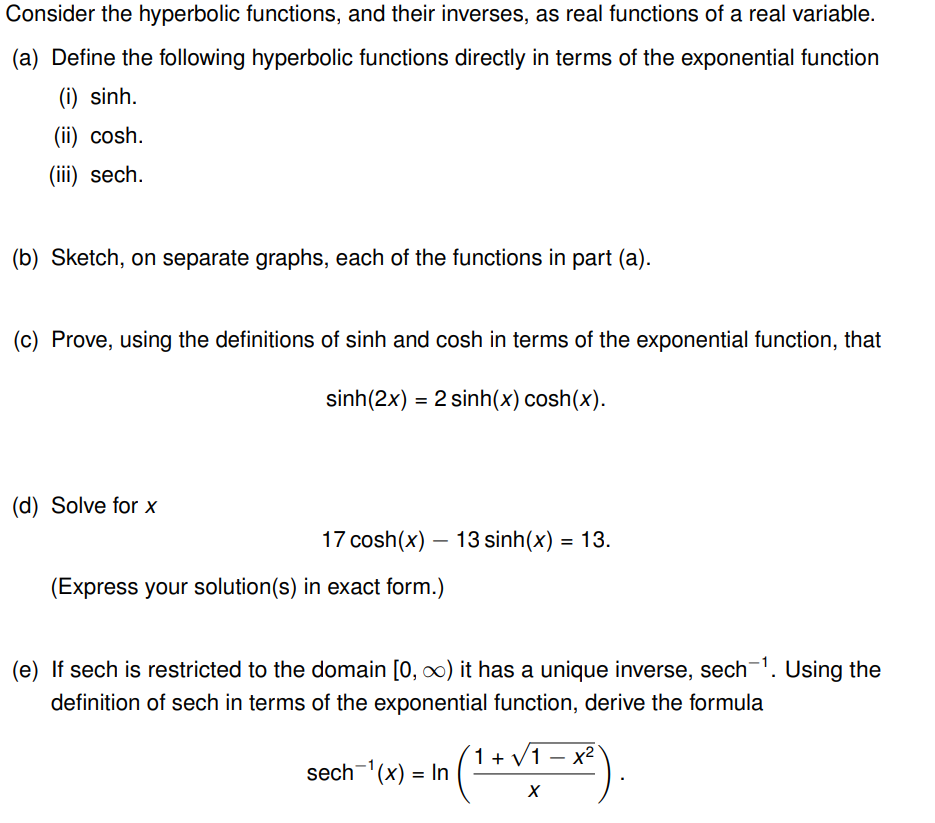(d) Solve for x 17 cosh(x) − 13 sinh(x) = 13. (Express your solution(s) in exact form.)
(d) Solve for x 17 cosh(x) − 13 sinh(x) = 13. (Express your solution(s) in exact form.)
Algebra & Trigonometry with Analytic Geometry
13th Edition
ISBN:9781133382119
Author:Swokowski
Publisher:Swokowski
Chapter6: The Trigonometric Functions
Section6.6: Additional Trigonometric Graphs
Problem 60E
Related questions
Question
maths help can you do d) please

Transcribed Image Text:Consider the hyperbolic functions, and their inverses, as real functions of a real variable.
(a) Define the following hyperbolic functions directly in terms of the exponential function
(i) sinh.
(ii) cosh.
(iii) sech.
(b) Sketch, on separate graphs, each of the functions in part (a).
(c) Prove, using the definitions of sinh and cosh in terms of the exponential function, that
sinh(2x) = 2 sinh(x) cosh(x).
(d) Solve for x
17 cosh(x) — 13 sinh(x) = 13.
(Express your solution(s) in exact form.)
(e) If sech is restricted to the domain [0, ∞) it has a unique inverse, sech-¹. Using the
definition of sech in terms of the exponential function, derive the formula
(1+√1-x²)
sech ¹(x) = In
Expert Solution
This question has been solved!
Explore an expertly crafted, step-by-step solution for a thorough understanding of key concepts.
Step by step
Solved in 3 steps

Recommended textbooks for you

Algebra & Trigonometry with Analytic Geometry
Algebra
ISBN:
9781133382119
Author:
Swokowski
Publisher:
Cengage

Algebra & Trigonometry with Analytic Geometry
Algebra
ISBN:
9781133382119
Author:
Swokowski
Publisher:
Cengage